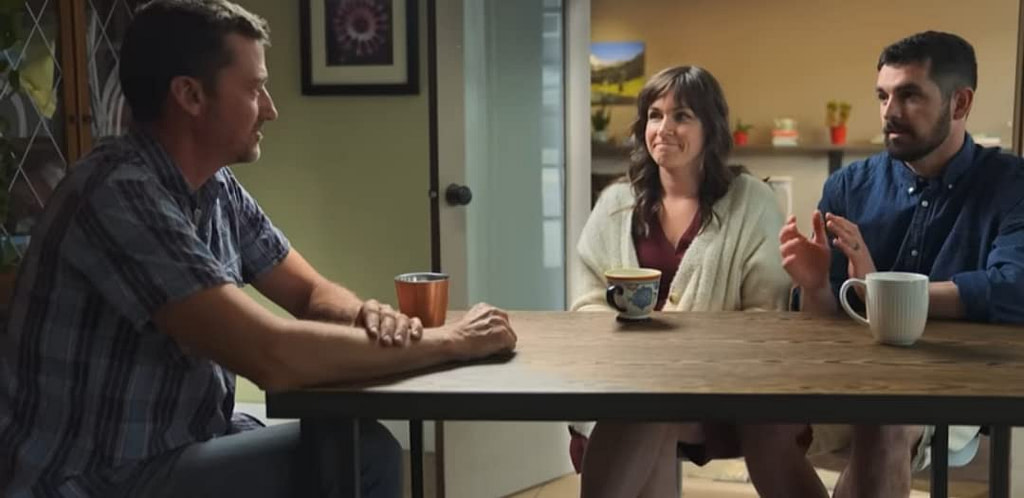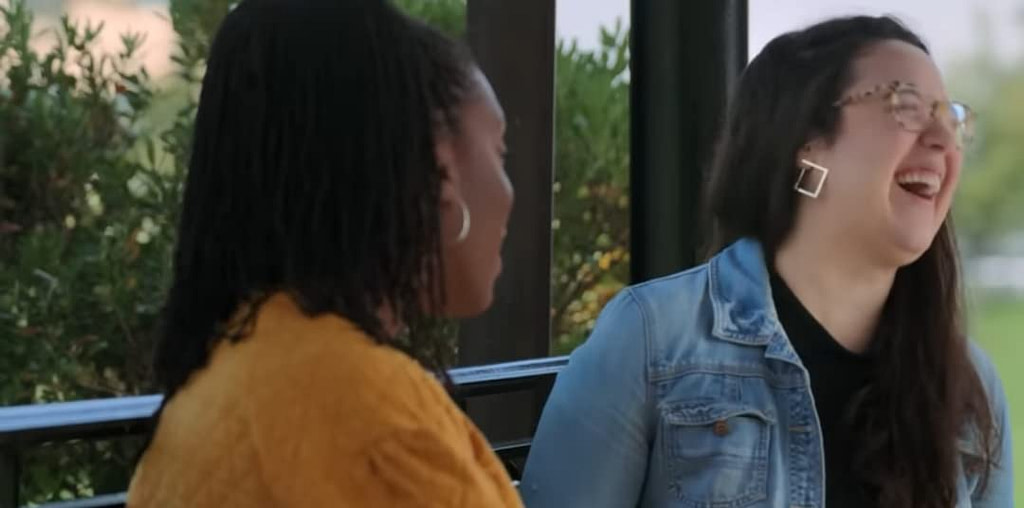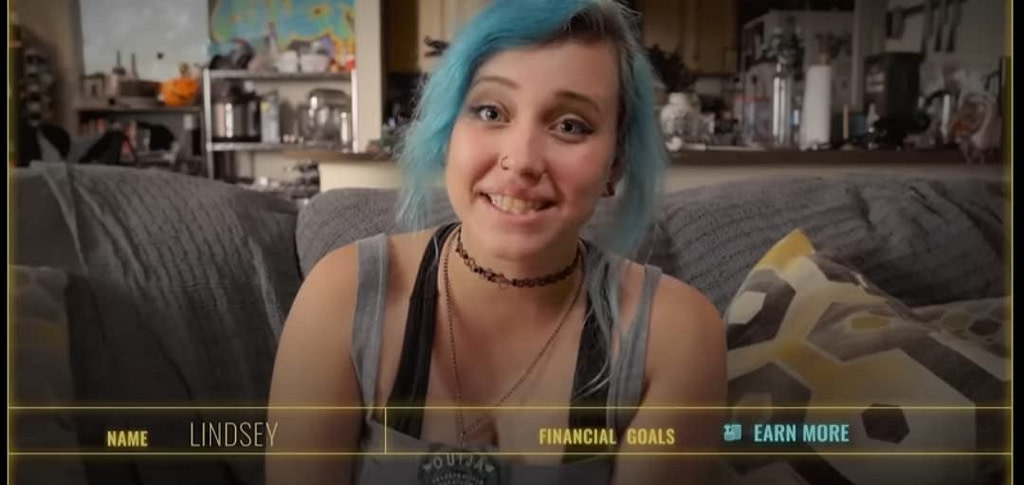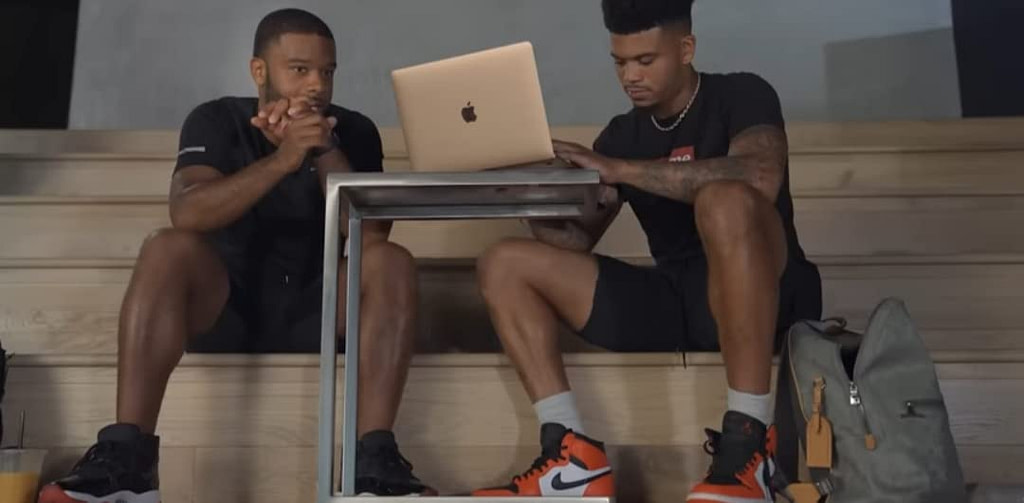Get Smart With Money is a 90-minute documentary on Netflix that revolves around four households facing various financial challenges. Each one partners up with a different money expert who attempts to give guidance and resolve their issues.
This Get Smart With Money review will summarize each journey, highlight the most valuable lessons on display, and help you decide whether it’s worth watching.
Kim, John, and Pete Adeney
Kim and John are married with a couple of kids. John recently lost his engineering job due to the economic fallout from the COVID-19 pandemic, while Kim’s business as a women’s empowerment coach is growing exponentially.
As a result, John becomes a stay-at-home dad, while Kim expects to bring in an incredible $300,000 for the year. However, their spending also increases, and they pay roughly $13,000 in expenses per month for their family of four.
Kim and John want to cut back on their spending and find ways to put all the extra money they have coming into better use. Enter Pete Adeney, also known as Mr. Money Mustache.
Most Valuable Takeaways
Though I was a little disappointed in this plotline, Pete brings up a few valuable points during his time on screen. First, he mentions the 4% rule, one of the most powerful concepts in personal finance.

It’s not an ironclad rule, and there are some significant caveats to consider, but it gives you a goal you can use to structure your finances. Knowing you need to invest about 25 times your annual expenses to retire makes saving money a game you can win, which can be highly motivating.
Second, Pete emphasizes the importance of aligning your spending with what makes you truly happy rather than wasting it on conveniences that bring short-term satisfaction. At one point, he asks Kim and John a simple question: “What would you like your life to be like?”
Kim says she wants to retire early and spend time with their kids, and Pete chides her and John for failing to align their spending with their goal. If you’re making at least a decent living and spending your disposable income without a plan, ask yourself the same question. See if your money habits match up with what makes you happy.

Is It Worth Watching?
I’ve long been a fan of Mr. Money Mustache’s blog and its place in advocating for the Financial Independence, Retire Early (FIRE) movement. In fact, Pete’s participation in this project is what interested me in this documentary in the first place.
Unfortunately, Get Smart With Money isn’t the best demonstration of his principles. Pete imparts some valuable wisdom, but it’s toned down from his usual aggressive stance. I suspect Netflix edited his content to better appeal to viewers.
In addition, Kim and John make so much money that it’s difficult to relate to them and even harder to sympathize, which the show tries to get you to do for all its subjects.
If you’re making hundreds of thousands of dollars annually, there’s little reason to have financial problems, barring extreme circumstances like health problems.
It would’ve been much more interesting and inspiring if they’d shown Pete take a family closer to the average financial profile. He could’ve taught them how to reach financial independence without such a high income, which is possible.
Ultimately, you may struggle to engage with this storyline unless you’re making more money than you know what to do with at the moment.
Ariana and Tiffany Aliche
Ariana inherited an unhealthy relationship with money from her parents, who often said things like “Well, we deserve this” to justify their poor financial decisions. As a result, she has a spending problem that’s continually driven her deeper into debt.
Ariana is also a victim of the student loan trap and inadvertently saddled herself with a mountain of debt to get a college degree when she was too young to understand the implications.
As a result, she has $45,000 in credit card debt and a whopping $108,000 in student loans when she starts her journey with money expert Tiffany Aliche. She’s also struggling with a spending problem and growing feelings of guilt and hopelessness.
Most Valuable Takeaways
Ariana’s storyline contains several lessons worth mentioning. First, money problems are often emotional, and fixing them isn’t always as simple as learning new information. It frequently requires personal growth.
For example, Ariana previously used debt consolidation to refinance her credit cards into a personal loan with a lower interest rate. However, that freed up her credit cards, and she promptly maxed them out again because she hadn’t changed the habits that got her in trouble in the first place.
Second, Ariana’s experience demonstrates the necessity of building an emergency fund before putting your savings toward investments or extra debt payments. When her car breaks down, she staves off the worst because of the cash Tiffany forced her to set aside.
Finally, Ariana shows you can overcome a spending problem by taking the matter out of your hands. She has her employer split her paycheck between multiple accounts and only carries a debit card attached to the one reserved for day-to-day spending. Its funds are limited, which restricts her ability to overindulge.

Is It Worth Watching?
Ariana is another potentially polarizing subject. She has what she needs to build a solid financial foundation, including an adequate income and a supportive partner. However, she consistently self-sabotages with her inability to rein in her spending.
Many people struggle with similar issues, but Ariana may come across as privileged to someone struggling with debt due to circumstances beyond their control rather than a lack of self-discipline.
To make matters worse, Tiffany can’t quite get through to Ariana during the show. She spends a lot of screen time suggesting ways to fix Ariana’s mindset, but they don’t really work, despite the progress Ariana makes toward paying off her debts.
Ultimately, it may be interesting to watch this section if you can relate to Ariana’s debt and spending issues. However, it may not give you the tools you need to rectify your situation.

Lindsey and Paula Pant
Lindsey is a twenty-something working 50 hours per week between two jobs in the service industry. She wants to be in a more creative field, such as fashion or art, but she’s having issues paying her bills and has no time or energy to chase her dreams.
In addition, Lindsey struggles with anxiety and depression. She wants to improve her financial position so she can afford health insurance and get medication and therapy to help with her mental health.
When she starts working with money expert Paula Pant, Lindsey makes roughly $1,000 per week between her waitressing and bartending jobs. She isn’t in debt, but she doesn’t have savings either.
Most Valuable Takeaways
Lindsey’s situation should be relevant to most viewers. Her income is close to the median, she lives paycheck-to-paycheck, and she has a job she’d rather not be doing. As a result, her storyline is full of relevant lessons.
However, two of them stuck out to me as the most impactful. First, it is possible to have a career you enjoy that pays you well enough to live comfortably, even if you’re stuck in a dead-end job and struggling to save money.
The journey may be long, grueling, and unfair. The costs of housing, healthcare, and education are high, while wages are stagnant. There will be people with advantages over you.
However, that doesn’t mean you should give up on fulfillment. The best way forward is always to focus on what you can control and incrementally work toward a better life.
Second, there’s a critical difference between the two types of side hustles. The first involves trading your time for money and is essentially another job. The second is a scalable business that lets you generate income while you’re not working.
Your time and energy are limited, and you probably don’t need a time-sucking side hustle if you’re already overworked. Gigs like ride-sharing and food delivery don’t pay well anyway.
You’re often better off starting a scalable side hustle you enjoy that could eventually grow into a lucrative business, even if it takes longer to start making money.

Is It Worth Watching?
Lindsey’s story is easily the best part of Get Smart With Money. She’s much more relatable than the other subjects. It’s legitimately inspiring when she overcomes her obstacles, and I found myself genuinely excited for her success.
If her journey had its own episode rather than being interwoven with three other plotlines over 90 minutes, I’d recommend watching it without hesitation.
That said, it’s not without its frustrating moments. For example, Paula once suggests Lindsey generate dog-walking leads by going to the park, drawing pictures of people’s pets, and giving them her information.
Not only does that contradict her recommendation that Lindsey starts a scalable side hustle, but it’s not a very efficient strategy. I suspect she threw the idea out as an example, but Lindsey acted on it, forcing Netflix to include the footage.
However, these imperfections ultimately aren’t significant enough to ruin Lindsey’s story. If you’re in a similar situation, I’d say her section is worth watching.
Jalen “Teez” Tabor and Ro$$ MacDonald
Jalen “Teez” Tabor is a professional football player that made $1.6 million immediately upon joining the National Football League (NFL). However, no one taught him how to save or invest, and he spends most of his earnings on houses, jewelry, and vacations.
Unfortunately, his team releases him after two seasons, leaving him with a little under $300,000 in cash and no income. Ross “Ro$$ Mac” MacDonald attempts to help him overcome his fear of investing and start setting aside money for the future.
Most Valuable Takeaways
The financial lessons in Teez’s storyline are primarily about investing. Ro$$ introduces Teez to the S&P 500, demonstrates the power of compound interest, and pushes him to start putting more money into the stock market.
These are valuable ideas for the uninitiated, but there’s nothing groundbreaking here. You won’t learn much from Teez’s story if you’ve studied passive index investing. Even if you haven’t, you’re likely better off exploring the concepts through a more detailed medium.

Is It Worth Watching?
You probably won’t get much from Teez’s storyline unless you’re a professional athlete, lottery winner, or beneficiary who recently came into a significant windfall. I’m not sure why Netflix decided to use him for the documentary. His financial situation is irrelevant to the overwhelming majority of consumers.
It also comes across as a little tone-deaf. At one point, we see Lindsey discuss how badly she wishes she had the money for health insurance to deal with her crippling anxiety. Immediately after, the show transitions to Teez lamenting that he only made the practice squad, set to mournful music, where he’ll earn $10,000 per week.
In addition, Ro$$ gives generally good advice but doesn’t go into much detail regarding why. Even though the strategy he suggests is widely applicable, it’s not universally beneficial.
In fact, investing in stocks is often unwise for someone with no income and finite cash reserves, like Teez at the show’s onset. Ultimately, this is one storyline I feel confident saying most people can skip.
Is It Worth Watching?
Get Smart With Money is a bit of a mess. It would’ve been infinitely more consumable as a four-part series with separate episodes for each household rather than a feature-length documentary.
The financial circumstances of the subjects are all worlds apart. Even if you identify with one of them, you may spend 75% of your time struggling to relate to whoever’s on screen.
There are some valuable insights throughout the show, especially for someone brand new to earning, saving, paying off debt, and investing. However, the structure and editing choices hold it back, and the most pivotal lessons often lack essential context. Ultimately, there are better introductions to personal finance.







